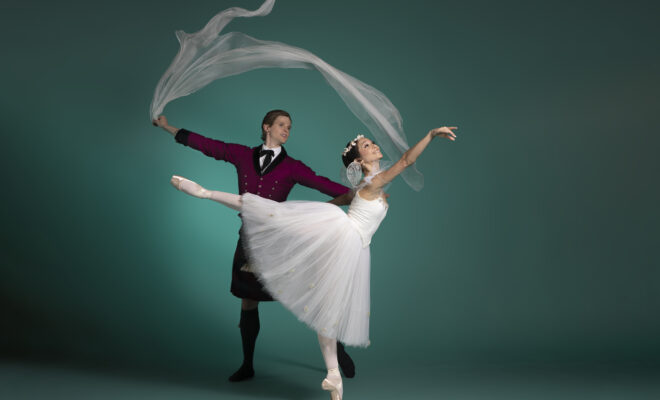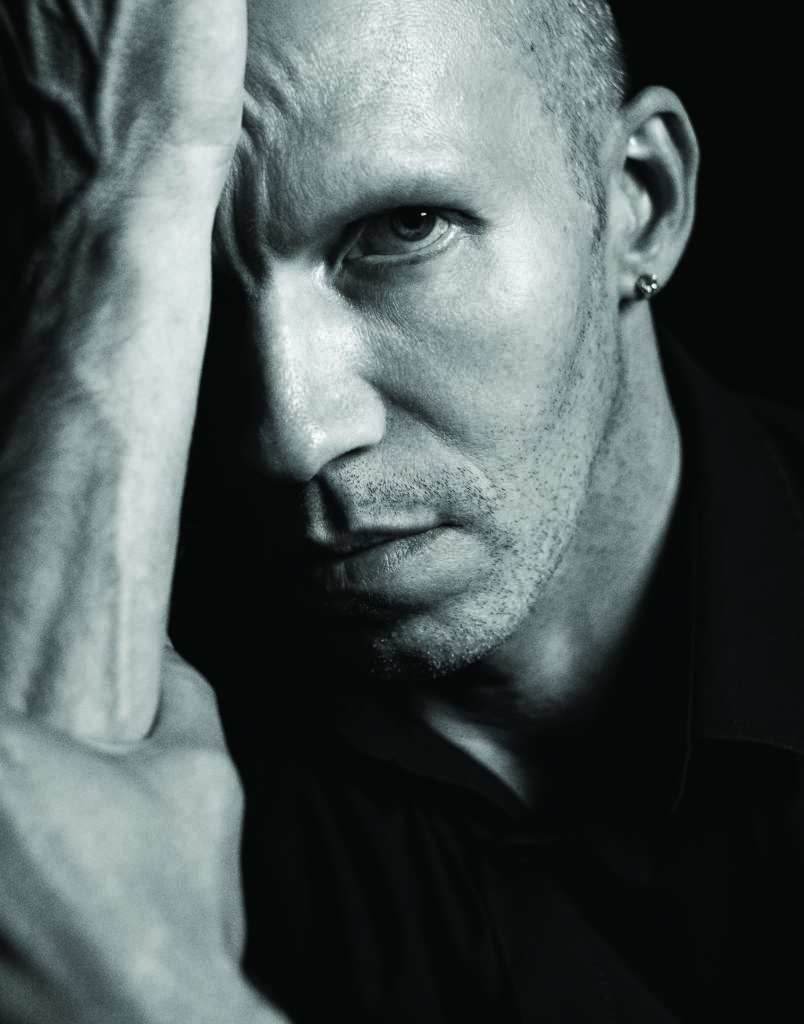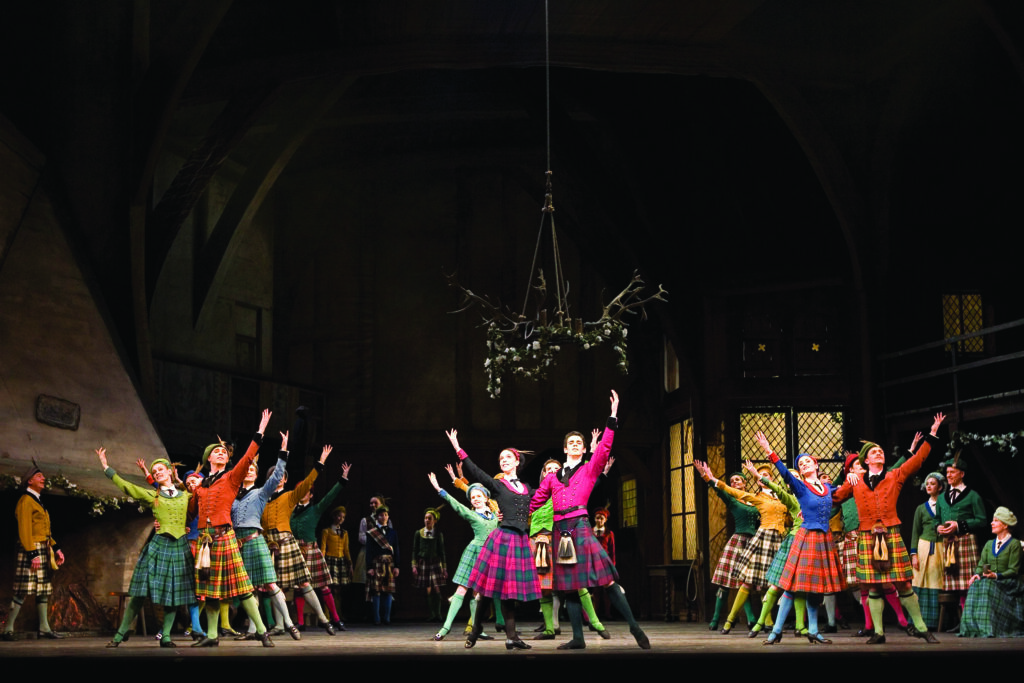
Arts & Culture
The Beating Heart of Danish Ballet: The Sarasota Ballet Welcomes Johan Kobborg’s La Sylphide
By Sylvia Whitman | Header Photo by Frank Atura | February 2023
The raves for Johan Kobborg’s productions of La Sylphide, making its company premiere with The Sarasota Ballet in March, span the globe. “A handful of superlatives,” wrote a reviewer in London’s Financial Times. From Atlanta to Zurich, arts writers have marveled at Kobborg’s creating something new of something old—in this case the 1836 ballet by August Bournonville that at the time rejuvenated the Royal Danish Ballet and helped turn pointe shoes into an emblem of Romantic dance.
Ballet embodied globalization long before the buzzword came to describe the flow of trade and ideas across borders. Start with Milan-born dancer-choreographer Filippo Taglioni, who created for the Paris Opera Ballet (and his ballerina daughter) a story of witches and a young sylph whose charms derail the wedding of a farmer in the Scottish Highlands. Add Copenhagen-born Bournonville, who reimagined La Sylphide, and through that and scores of other ballets established an exuberant Danish style with powerful roles for male dancers.
La Sylphide fell out and then back into fashion. Now bring in Odense-born Kobborg. After training at the Royal Danish Ballet school, he joined the company. In 1994, he danced the part of bewitched farmer James in La Sylphide with such verve that—in a first for the Royal Danish Ballet—he was promoted right on the stage from soloist to principal. Acclaim, prizes, and performances across continents accrued for Kobborg, followed by new credits as a choreographer, director, and producer. Along the way, he partnered with Bucharest-born ballerina Alina Cojocaru in dance and life. Which is how he ended up on a Zoom call from home in London, where he was temporarily solo-parenting their children, two and five, while Cojocaru was off performing.

You’ve described La Sylphide as the “beating heart” of Danish ballet and a milestone in pointe shoe work in classical ballet. To what else do you attribute its appeal?
It has survived more or less intact—more or less, I say—because the essence of the story is timeless. It’s not a flash in the pan. One of the reasons it’s survived is because you can view the performance with different glasses. Regardless of age, you will find something in the story that works for you. You can see it as a witch and a beautiful woman with wings and a man torn between two women, a fairy tale. But you can also see it as something a little bit more profound, as the essence of life, the choices we make on a daily basis in the search for happiness.
I cannot generalize, but at least in my case, I can relate to these characters, to their actions, even if I don’t agree with them. As artists, as people, we constantly question ourselves. Is this right for me? Should I do this or do that? Should I stay in Denmark and be happy and dance there? Go to the unknown in the UK? We are in constant search in life. This ballet is about that search, which can lead to many different outcomes. The outcomes are unknown. We cannot always play it safe.
There are so many possibilities for artists to put their own individual ideas of these characters into the ballet. As somebody who’s producing the story on stage, it’s also interesting sometimes to put more weight on certain elements of the story. I always try my best to stay true to the Bournonville style, a very specific way of interpreting the choreography. But with the lighting, you can put more focus on certain elements on the stage that might change the feel of a scene. Or with characters—like Madge, the witch—you can make her very fairy tale-esque, or perhaps more like a broken woman.
For me, it works either way. Even after nine productions, it’s still exciting for me. As a stager, as a producer, as a choreographer, my approach depends a bit on what company and what audience I’m working for.
What’s the spin for Sarasota?
What I find amazing and interesting is that The Sarasota Ballet now has the sets and costumes, the first ever original designs, complete designs, for La Sylphide by Søren Frandsen and Henrik Bloch. Prior to that, it was bits from an opera, a tree from one thing, a chair from La Bohème, a window from Swan Lake. The designs were all commissioned by the famous Danish dancer and director, Flemming Flindt, who passed away in Sarasota. So, it’s like this set has come full circle, come home. I think Flemming Flindt would be very happy that Sarasota and Iain [Iain Webb, director of The Sarasota Ballet] got this set.
That makes me want to go more to the core of the traditional ballet. When he was alive, Bournonville made a lot of changes over the years to La Sylphide, and then it’s just been passed down from dancer to dancer. For this production, I’ve brought back some of the scenes that have been cut over the years.
As a choreographer, I have to interpret what steps would have been to the music for the cut scenes because in Denmark there is no book of steps written down and existing; it’s taught mouth to ear. But I’ve done so using all my experience and training, trying to imagine what Bournonville envisioned and taking the elements of the different works he’s done. I know when he stopped performing, he minimized the role of James for the next cast because he didn’t feel they had his level of quality. There have been constant changes.
And then—quite incredibly—the person who’s in charge of collecting the scores suddenly found the original orchestration of some of these [reinstated] scenes. So, for the first time since 1862, I think, we’ll hear this in performance.

When you show up in the studio at the end of February, how will you coach The Sarasota Ballet without a step-by-step script?
Obviously, nowadays we have video, but a video can teach you only so much. It loses a lot of meaning. I’ve done this ballet so many times I don’t have to look at anything I’ve written down because it’s all in my body. Even if I haven’t done a production for a couple of years, I can get up in the middle of the night, and I can teach you every step from all the characters if you play me the music.
What happened with some of these new scenes and pieces of music that I have put back in the ballet, we have a few handwritten notes from Bournonville, where he says things like James runs to the window, James asks his friend ….No steps were written down, but there were a lot of clues in the score to the action.
My job as producer and choreographer is to communicate and to obviously teach the steps to ensure the style is correct. As an artist, I don’t think I’ve ever been able to hide that I was Danish trained; it’s such a unique, naturalistic style. These roles are incredibly difficult but fulfilling as an artist because Bournonville himself was a very good dancer. He didn’t want to stand behind the ballerina, playing second fiddle, so he put himself in line with the women.
So, it’s very much about communicating. If I dance the lead, I might have a pre-imagined version of how I want to do James, but I’ve had to change my idea so many times, depending on who my partner is. Where in other ballets you’re acting and then you’re dancing, here it’s conversations on the stage. You can see this ballet many times because if there’s just one different dancer, the energy—the whole production—might be different.
The Sarasota Ballet might write down what I teach them. I know this may sound weird, but I don’t feel it’s my job to tell them exactly what to do. I would rather teach them how they should think, so that their thoughts are completely in line with the style of Bournonville. In order to keep things alive, the dancers have to bring their own personalities into it. It’s more about finding ways that they can function the way they are as artists, as people, as humans—how they can organically live within a style that is new to them. It may sound like nonsense, but the times that I as a dancer have enjoyed the most have not been when I was told this is how you have to do this but when I was taught how to understand what would be the right thing to do.
If you were sitting alongside the audience, what would you tell them to pay attention to?
If we take the fairy-tale approach, La Sylphide is about good and evil, about doing the right thing versus the wrong thing. It’s about the idea that once you reach a dream, it can no longer exist as a dream. It’s a beautiful, beautiful ballet.
But I quite often have tried to work against this idea in the industry that you have to think this or you have to look there. I can try to direct where the audience is focusing, but it’s not like a camera telling you this is the only thing you can look at. What’s wonderful about live theater is that you can look wherever you want to look. That freedom is good.
The Sarasota Ballet’s La Sylphide runs March 24-25, 2023 at Van Wezel Performing Arts Hall. More information at www.sarasotaballet.org/events/program-6-la-sylphide



You must be logged in to post a comment Login